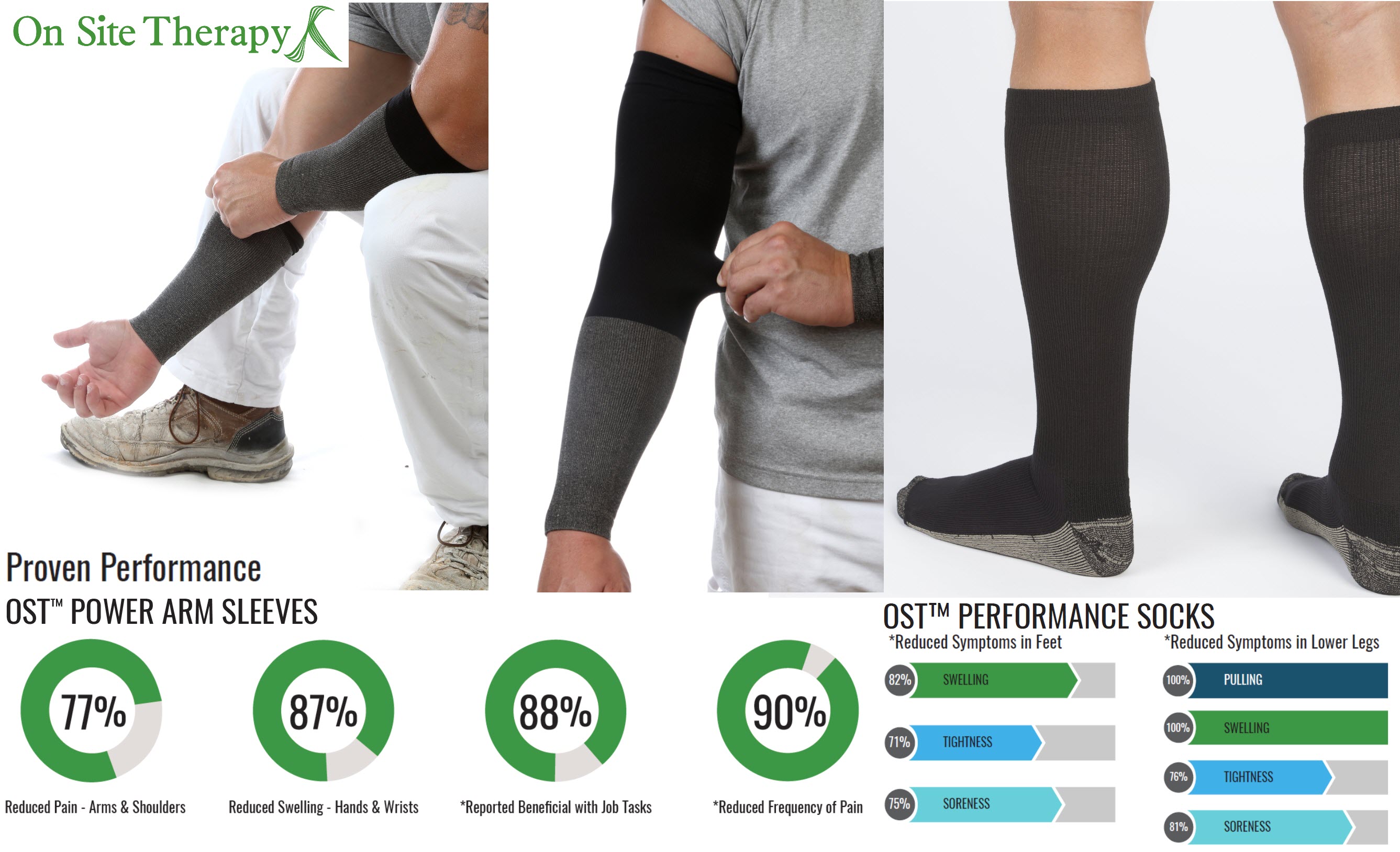Fatigue Management
Fatigue Management
Industry specific Fatigue Management Protocols (FMP’s) are developed based on the identified physical demands of the work and the occupational stressors encountered to accommodate production environments.
Understanding that all work is the same, and can be simplified into basic motions, is the premise of industrial time standards used to set production rates across many industries around the world. These motions, when repeated on a cyclical basis during a work shift can directly elicit muscle fatigue and result in what we may term: Repetitive Strain Injuries (RSI’s); Cumulative Trauma Disorders (CTD’s), Overuse Injuries; and/or simply Sprains or Strains.
Our OST™ Power Arm Sleeves were designed specifically to address repetitive upper extremity demands. Education can be provided in performing stretch-type routines focused on enhancing muscle health by increasing the return of venous and lymphatic fluids.

Why Should I Worry About Fatigue?
More of your employees may experience fatigue than you might imagine. In fact, a study in the Journal of Occupational and Environmental Medicine found that nearly 40% of U.S. workers experience fatigue, costing companies an astounding $136 billion per year in lost productivity. On Site Therapy’s mission is to help employers maintain a healthier and productive workforce.
Fatigue & Workplace Injury / Illnesses
According to the National Safety Council, the cost of workplace injuries and illnesses totals nearly $200 billion a year. Interestingly, the majority of the cited risk factors associated all have causation with worker fatigue. As industry advances with efficiencies we are increasing prolonged standing at work. Not surprisingly repeated exposure to this physical demand without intervention is costing employers an estimated 2 million lost workdays per year.

Download Our Special Report
The physicality of WORK is often compared to that of SPORTS. This is so much the case that more and more we hear the label “industrial athlete” being used by many corporate injury prevention & wellness programs. But what are the physical similarities between sports & work? And what are the differences when considering how to improve work performance?
Read Special Report





